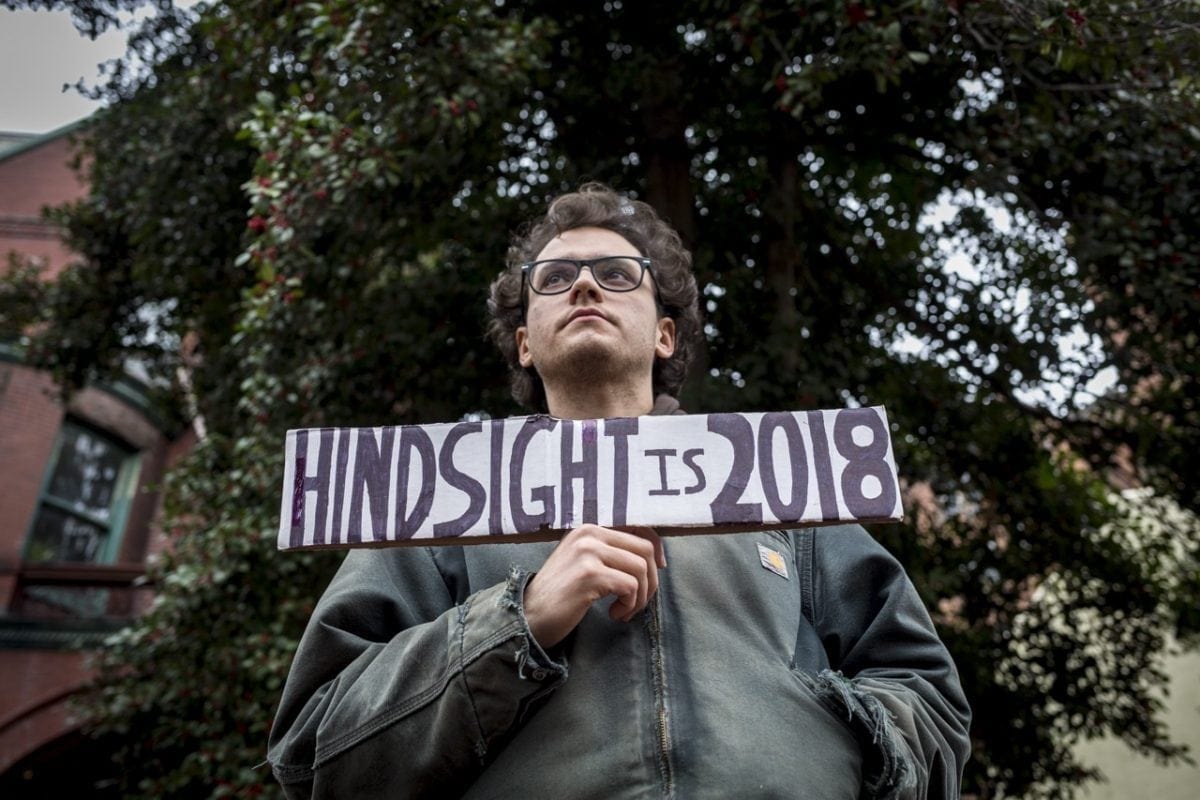


Banner rants from the Washington DC Women’s March: “Will trade 5 Trumps for 500,000 Refugees”; “Stay Pussytive;” “It’s Nacho Uterus;” “Keep Your Laws off my Body;” “YOU Immigrated from a Uterus…” ”Our kids are watching,” and my favorite, “I Already Marched for this s*#t 40 Years Ago.”
My 15-year-old niece, taking this all in: ”I hope this registers with you before I have to register.” A girl in a hijab wants to know, “Is this normal? Is it always like this?” My nephew pronounces the whole show “rated PG 13” and his parents squirm, realizing that it’s almost “R.”
“This is What Democracy Looks Like!”….? “Just, UGH!”


It saddens me to know that this is their first real awareness of democracy as young Americans, just beginning to think about their rights, their duties, their privilege.






Undoubtedly, this is the new normal. The March was about solidarity of values and rights. It was about respect and tolerance and taking power into our own hands. There is real anger, as if America just really woke up and discovered that this is not a bad dream. When de Tocqueville came to document the new country of America in the 19th century, he documented with wonder the way people in this new-fangled democracy believed that they had the power in their own hands to address problems, unlike anything seen in monarchical, hierarchical Europe at the time. If there was a problem, Americans gathered and organized! They would take power in their own hands and work to solve problems themselves, not immediately relying on a higher authority. Oh, the wonders of this new form of government!
“This is What Democracy Looks Like!”
Democracy punishes the complacent, those who are happy and satisfied, and favors those that are angry, the fringe efforts which are more invested, and disciplined to fight for power: Think of the prohibition movement, civil rights, the NRA, gay rights., the Tea Party. This is democracy in action.
And so the Women’s March on Saturday was the howl of the complacent, fighting back against the new establishment. There was anger, organization, strategy, passion—all the vital ingredients for a strong movement.

Few people seem to actually respect this president; many parents I know who voted for Trump shield their children from him. For the price of overlooking character, he is a vehicle for new tax policy, a conservative-leaning Supreme Court, deregulation, and jobs. They make allowance for hidden tax returns and a willingness to cede international dominance to the Chinese but admit that you would never be friends with the guy or expose him to your daughter.
And so, the power-through-chaos machine cranks up, and so do we; we are HIS problem now. Yes, we’ve learned the lessons of the complacent. We’ve also learned the underlying power of shared values and political engagement. These kids, these grannies, these dads, the young women are all very, very energized.
“This is What Democracy Looks Like!”

This blog was originally published on Medium.
 Nancy Richards Farese is a Marin County, CA-based social documentary photographer known for creating evocative and powerful images of non-profit work in places such as refugee camps in Sudan and Uganda, post-disaster areas such as Haiti and Liberia, and communities addressing severe need in their own backyards, such as San Francisco and New Orleans. Nancy is the founder of PhotoPhilanthropy, an organization that aims to connect and promote the work of non-profits and photographers in order to encourage more effective visual storytelling.
Nancy Richards Farese is a Marin County, CA-based social documentary photographer known for creating evocative and powerful images of non-profit work in places such as refugee camps in Sudan and Uganda, post-disaster areas such as Haiti and Liberia, and communities addressing severe need in their own backyards, such as San Francisco and New Orleans. Nancy is the founder of PhotoPhilanthropy, an organization that aims to connect and promote the work of non-profits and photographers in order to encourage more effective visual storytelling.

